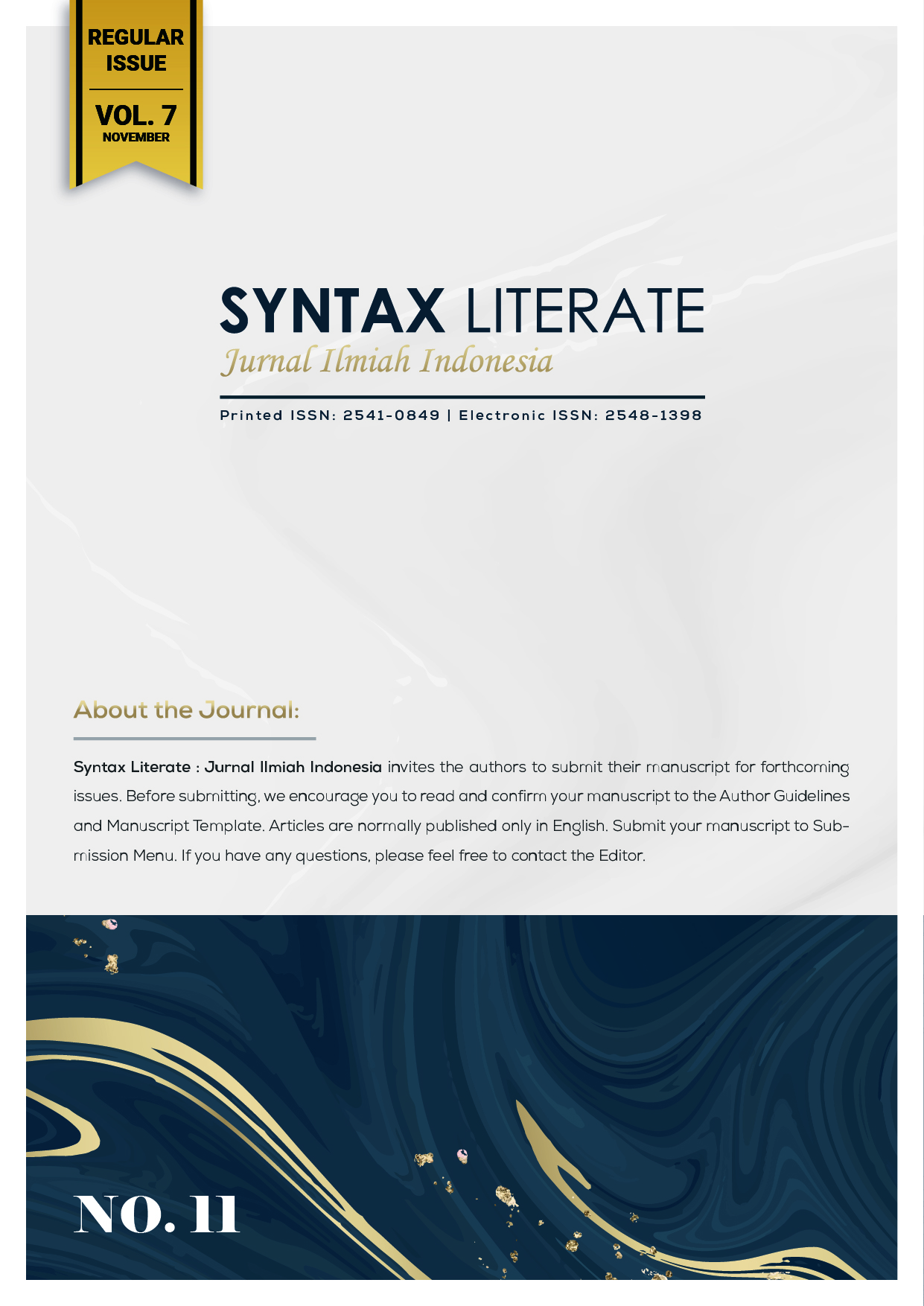The Effect of Incentives For Land And Building Tax on Rural and Urban Areas to Budget Solvency During Disasters in Indonesia Regencies
Abstract
The recent publication of the World Risk Index placed Indonesia as the third country with the highest disaster risk worldwide. The valuation formulates a risk index according to the country's exposure to natural disasters and coping abilities to hazards. Indonesia is appraised as the fifth country with the highest exposure to natural disasters, with a medium coping ability. The condition could worsen if the subnational government as first responders during a disaster do not have available fiscal capacity. Indonesia's central government focuses on strengthening disaster resilience through the implementation of the Disaster Risk Financing and Insurance Strategy. One of the main strategies is to promote household insurance. However, the role of subnational government is yet to be explored. The policy alternative is to provide incentives on property taxes. This research aims to describe the correlation between property tax incentives and subnational government fiscal conditions as an answer to the possibility of using property tax incentives to promote disaster resilience while maintaining fiscal balance. The novelty of this research resides in the aggregate analysis of property tax incentives in 21 municipalities in relation to its disaster resilience policy scope. Based on the analysis, property tax stimulus is not endangering the subnational fiscal condition. Hence is a safe policy alternative to further used as a disaster resilience policy.
Downloads
References
Alam, A. B. M. M., Alam, M., & Hoque, A. (2019). Spending Pressure, Revenue Capacity and Financial Conditon In Municipal Organizations: An Empirical Study. The Journal of Developing Areas, 53(1), 243–256. https://doi.org/10.1353/jda.2019.0014
Barbera, C., Jones, M., Korac, S., Saliterer, I., & Steccolini, I. (2017). Governmental financial resilience under austerity in Austria, England and Italy: How do local governments cope with financial shocks? Public Administration, 95(3), 670–697. https://doi.org/10.1111/padm.12350
Benali, N., Mbarek, M. ben, & Feki, R. (2019). Natural Disaster, Government Revenues and Expenditures: Evidence from High and Middle-Income Countries. Journal of the Knowledge Economy, 10(2), 695–710. https://doi.org/10.1007/s13132-017-0484-y
Bird, R. M., & Slack, E. (2004). International Handbook of Land and Property Taxation (R. M. Bird & E. Slack, Eds.). Edward Elgar Publishing, Inc.
Botzen, W. J. W., Deschenes, O., & Sanders, M. (2019). The economic impacts of natural disasters: A review of models and empirical studies. In Review of Environmental Economics and Policy (Vol. 13, Issue 2, pp. 167–188). Oxford University Press. https://doi.org/10.1093/reep/rez004
Bündnis Entwicklung Hilft Ruhr University Bochum – Institute for International Law of Peace and Conflict. (2022). World Risk Report 2022. https://weltrisikobericht.de/weltrisikobericht-2022-e.
Burnside, C. (2005). Chapter 2: theoretical prerequisites for fiscal sustainability analysis. In Fiscal sustainability in theory and practice: a handbook. The World Bank. http://ebookcentral.proquest.com/lib/indonesiau-ebooks/detail.action?docID=459364.
Chow, H. K., & Wilson, P. (2020). Monetary Policy in Singapore and the Global Financial Crisis. https://ink.library.smu.edu.sg/soe_research/1352
Ciumaş, C., & Coca, R. A. (2015). an Analysis of The Factors Influencing The Demand For Catastrophe Insurance. Journal of Public Administration, Finance and Law, Special issue 2, 69–78.
Dubelmar, D., Astrin, M., Kartini, D., Mareli, S., & Soedarno, M. (2021). Natural Disaster Insurance Policy in Indonesia: Proposing an Institutional Design.
Dubelmar, D., Dwi Kartini, M. A., Mareli, S., & Murwendah, M. (2020). Disaster Response in Indonesia: Initiating Income Tax Policy Pro Disaster Mitigation. Politik Indonesia: Indonesian Political Science Review, 5(2), 243–256. https://doi.org/10.15294/ipsr.v5i2.21363
Gorina, E., Maher, C., & Joffe, M. (2018). Local Fiscal Distress: Measurement and Prediction. Public Budgeting and Finance, 38(1), 72–94. https://doi.org/10.1111/pbaf.12165
Gujarati, D. N., & Porter, D. C. (2009). Basic Econometrics (Fifth Edition). Mc Graw-Hill.
Hutapea, E., & Lidya Gultom, Y. M. (2022). The Unintended Consequences of Tax Exemption Policy on Land and Building Tax (Vol. 12, Issue 1).
Kelly, R., White, R., & Anand, A. (2020). Property Tax Diagnostic Manual. World Bank Group.
Miao, Q., Hou, Y., & Abrigo, M. (2016). the Financial Shocks of Natural Disasters: A Panel Study of U.S. States. https://surface.syr.edu/cprhttps://surface.syr.edu/cpr/232
Neuman, L. (2014). Social research methods : qualitative and quantitative approaches (Seventh Edition). Pearson Education Limited.
Noy, I., & Nualsri, A. (2011). Fiscal storms: public spending and revenues in the aftermath of natural disasters. Development Economics, 16(1), 113–128. https://doi.org/10.2307/26263709
PT Reasuransi MAIPARK Indonesia. (2022). Statistik Asuransi Gempa Bumi Indonesia per 30 Juni 2022. https://www.maipark.com/assets/uploads/Statistik%20Asuransi%20Gempabumi%20Indonesia%2030%20Juni%202022_resize.pdf
Safitra, D. A. (2022). Insentif Pajak Atas Bangunan Hijau: Sebuah Studi Komparasi. Jurnal Pajak dan Keuangan Negara.
Safitra, D. A., & Hanifah, A. (2022). Comparative Study of Stimulus on Land and Building Tax in Rural and Urban Areas. Jurnal Anggaran Dan Keuangan Negara Indonesia, 4(1). https://anggaran.e-journal.id/akurasi
Saliterer, I., Korac, S., Barbera, C., & Steccolini, I. (2021). Taking Stock: The Role of the Institutional Context for Local Government Financial Resilience. In R. Geissler, G. Hammerschmid, & C. Raffer (Eds.), Local Public Finance (pp. 319–332). Springer International Publishing. https://doi.org/10.1007/978-3-030-67466-3_18
Shindo, T., & Thorburn, C. (2020). Developing Insurance Markets: Do fiscal incentives help long term life insurance development?
Siagian, T. H., Purhadi, P., Suhartono, S., & Ritonga, H. (2014). Social vulnerability to natural hazards in Indonesia: Driving factors and policy implications. Natural Hazards, 70(2), 1603–1617. https://doi.org/10.1007/s11069-013-0888-3
Swanson, J. (2022). Property Tax Relief for Properties Damaged in a Disaster. www.house.mn/hrd
Trasberg, V., Raffer, C., & Moisio, A. (2021). Local Government Tax Structure. In Local Public Finance (pp. 333–355). Springer International Publishing. https://doi.org/10.1007/978-3-030-67466-3_19
UNDRR. (2020). Disaster Risk Reduction in The Republic of Indonesia: Status Report 2020. https://www.undrr.org/media/48530/download
Wang, X. (2015). Financial Management in the Public Sector: Tools, Applications and Cases Third Edition: Vol. Third Edition (Third Edition). Routledge.
Watanabe, S. (2015). natural disasters and taxation in japan. PRI Discussion Paper Series, 15A(04).
Wiyanti, A., & Halimatussadiah, A. (2021). Are Disasters a Risk to Regional Fiscal Balance? Evidence from Indonesia. International Journal of Disaster Risk Science, 12(6), 839–853. https://doi.org/10.1007/s13753-021-00374-2
Copyright (c) 2022 Made Satriawan Mahendra, Maria Tambunan, Devi Yanti Br. Bangun

This work is licensed under a Creative Commons Attribution-ShareAlike 4.0 International License.











